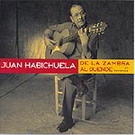Morisco party with music and "algazara". Subsequently, the typical party of the Andalusian gypsies. Today we use the "zambra granadina".
In the "cueva sdel Sacromonte" we will find three different dances: the "alboreá", the "cachucha" and the "mosca", symbols if the three moments of a gypsy wedding. This is an old dance.
Zambra
Zapateado
The zapateado is a dance of Spanish origin characterized by a lively rhythm punctuated by the striking of the dancer's shoes, akin to tap dance. The name derives from the Spanish word zapato for "shoe": zapatear means to strike with a shoe.
The dance is also popular in various countries of Latin America.
The term is also used to refer to percussive footwork in some Spanish/Latin dances that involve elaborate shoe clicking and tapping and to the percussion music produced by shoe striking.
Among the composers to write Spanish Zapateados is Paco de Lucía, whose Precussión Flamenca is a very popular piece for guitar and orchestra. Also Pablo de Sarasate, whose opus 23, no. 2 is a version of the dance scored for violin and piano. The piece is full of harmonics, double stops, left hand pizzicato and is often performed by young virtuosos.
Zapateado Catalán, Catalonian Zapateado
Dance and song performed byold Catalonian gypsies in private parties.
Zapatear
Rhythmical percussion performed with the foot. Using the sole, the heel and the toe cap.
The term is also used to refer to percussive footwork in some Spanish/Latin dances that involve elaborate shoe clicking and tapping and to the percussion music produced by shoe striking.
Sole and heel.
Redobles. Double knocks with the whole foot.
Tembleque. We use only the heels.
Zarandeo
Zarandillo
Spanish song-dance, parent of the zarabanda. With a compas of 3/4 or 3/8. An example: Guajira from Cuba.
Zejel / Zejeles
Arabic stanza, specially suitable for singing. The origen of the carol. First we called it "Estribote", because of its origins: from a poem based in the "estribillo" (point of support).
Zorongo
Popular song and dance from the Andalusian music. Characteristic for its ternary metric system. Famous performers: La Argentinita and Federico GArcia Lorca in 1931 (singing and piano). Not strictly a flamenco palo.
Zurraque


